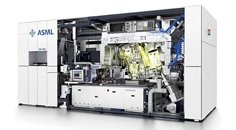Q4 2017 300 mm Silicon Wafer Pricing to Increase 20% YoY in DRAM-like Squeeze
Silicon wafers are definitely the best kind of wafers for us tech enthusiasts, but as we all know, required financial resources for the development and production of these is among the most intensive in development costs and R&D. It's not just about the cost of employing enough (and crucially, good enough) engineers that can employ the right tools and knowledge to design the processing miracles that are etched onto wafers; there's also the cost of good, old production as well. Extreme Ultraviolet Lithography Systems that are used for the production of silicon wafers are about the size of a city bus, and typically cost more than 100 million euros ($115.3 million) each. ASML, a Dutch company that specializes in this kind of equipment, announced this year it was expecting to see a 25% revenue growth for 2017. Increased demand for these systems - and added cost of development of ever increasingly small and complex etchings in wafers - means this sector is seeing strong growth. But where there is strong growth, there is usually high demand, and high demand means higher strain on supply, which may sometimes not be able to keep up with the market's needs.
This is seemingly the case for wafer pricing; as demand for wafer production has been increasing, so to are prices. Faced with increased demand, companies are usually faced with a tough question to answer in regards to the correct course of action. Usually, it goes like this: higher demand at the same supply level means higher pricing. However, if supply isn't enough to satisfy demand, manufacturers are losing out on potential increased sales. This leads most companies to increase supply relative to demand, but always with lower projected output than demand requires, so they can bask in both increased ASP (Average Sale Price) and higher number of sales. This has been the case with DRAM memory production for some time now: and is happening with 300 mm silicon wafers as well.
This is seemingly the case for wafer pricing; as demand for wafer production has been increasing, so to are prices. Faced with increased demand, companies are usually faced with a tough question to answer in regards to the correct course of action. Usually, it goes like this: higher demand at the same supply level means higher pricing. However, if supply isn't enough to satisfy demand, manufacturers are losing out on potential increased sales. This leads most companies to increase supply relative to demand, but always with lower projected output than demand requires, so they can bask in both increased ASP (Average Sale Price) and higher number of sales. This has been the case with DRAM memory production for some time now: and is happening with 300 mm silicon wafers as well.




